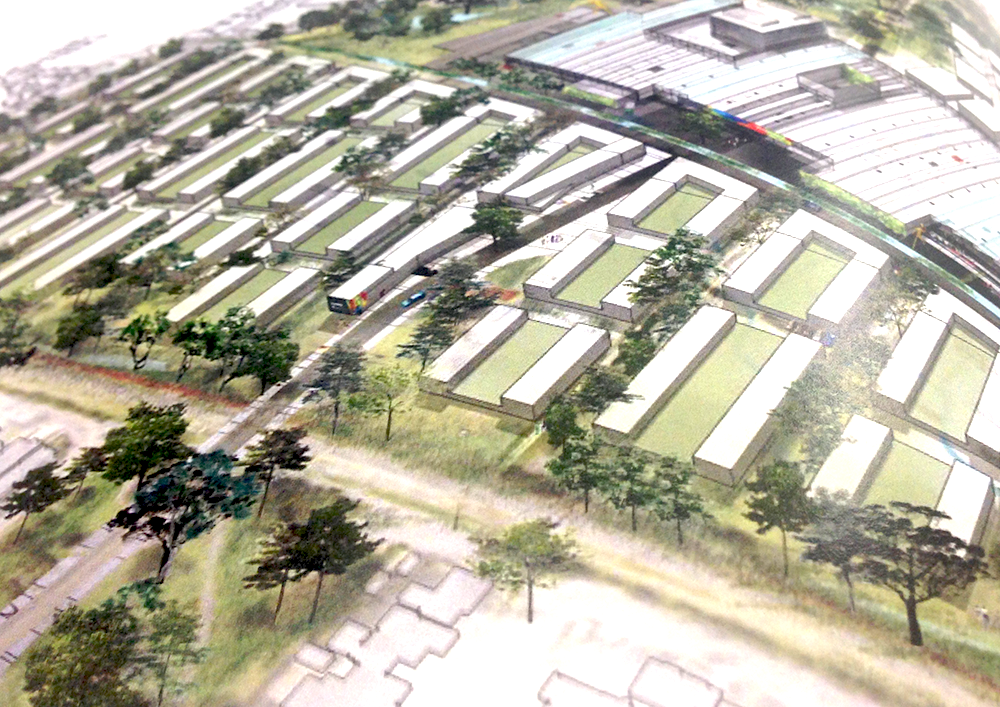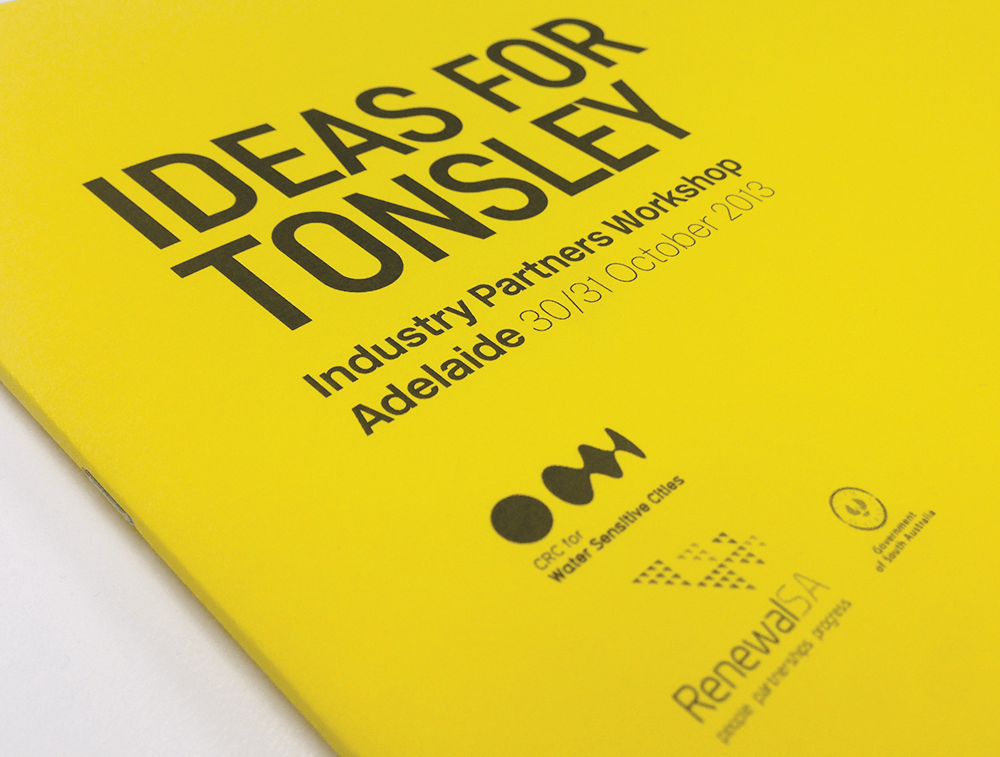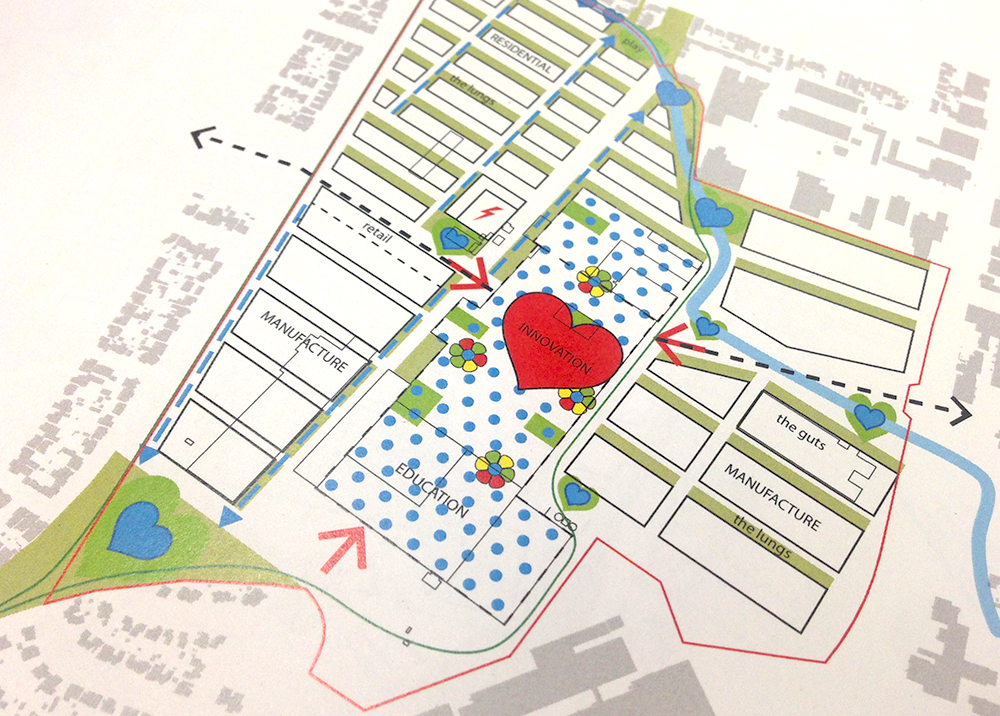Tonsley – manufacturing a greener future
The closure of the Mitsubishi plant in Adelaide’s Tonsley Park in 2008 marked the end of an era in a suburb that had long been synonymous with industry. At the same time, it created a unique opportunity to reimagine a 61 ha inner-city urban renewal site in a contemporary sustainable context. It became possible not only to master plan an exciting new development with a greener future in mind, but also to take a broader view: to consider impacts on the surrounding landscape, and to aim for ecological, hydrological, and cultural benefits.

The government body responsible for delivering the master plan’s outcomes was Renewal SA, a Participant of the CRC for Water Sensitive Cities (CRCWSC). Following completion of the plan in 2012, Renewal SA agreed to engage with the CRC and explore a range of “what-if” ideas for Tonsley, with a view to incorporating best-practice water sensitive planning. Tonsley provided an excellent opportunity for the CRC to demonstrate its technical capability to assist a large-scale, mixed-use redevelopment.
From the outset, the environmental bar for Tonsley was set high. What once was agricultural and industrial land is now to be converted into residential, recreational, commercial, and light industry components; and in keeping with the history of the area, the development must include some high-value manufacturing. Emphasis will also be placed on education and training in sustainable building and construction, engaging institutions such as the Sustainable Industries Education Centre (an amalgamation of former TAFEs). The site is to meet or exceed best-practice benchmarks for sustainability, and is being piloted under the newly developed Green Star scheme. Implicit in this is the goal of a healthier environment and improved liveability. The site, which has no vegetation and includes a massive 8 ha shed, is uncomfortably hot in summer and cold in winter. The new development is intended to ameliorate these temperature extremes.

Professor Peter Skinner (School of Architecture, The University of Queensland), co-leader of the CRCWSC’s Sub-project D5.1 (Urban intensification and green infrastructure), believes that striving for the highest sustainability standards makes sense environmentally and economically. “The redevelopment should aim for Tonsley to become an innovative place where water sensitive urban design principles support sustainability and reduce running costs,” Peter argues. “Water and vegetation can help to rebrand Tonsley from industrial to a mixed residential community.”
The core thinking from a CRCWSC partner workshop held in October 2013 has been illustrated and described in a recently published CRCWSC research synthesis paper, Ideas for Tonsley, whose lead author is Jon Shinkfield (research fellow with Sub-project D5.1). The paper captures important design principles, and also suggestions for the implementation stage:
- Aligning residential roads in an east–west direction for optimal energy efficiency, maximising solar gain in winter and shade in summer
- Diverting and distributing stormwater to irrigate shade trees, as part of an urban forest strategy along pedestrian and cycle routes
- “Daylighting” (or partially daylighting) of drains and creeks that are currently piped: slowing the flow of water; reducing downstream flooding; capturing, cleansing, and reusing otherwise wasted water; increasing moisture content in the soils; and improving groundwater to support an urban forest and increased biodiversity
- Storing excess winter rain (harvested from roofs and stormwater) in large tanks to use for evaporative cooling and spray misting in summer
- Collecting run-off from the 8 ha shed roof in steel storage tanks, providing thermal mass to store winter warmth and summer cool
While the suggestion of an east–west road alignment came too late for the master planning process, there is still scope for the other new recommendations to be considered and implemented. This process will run for years, as the site goes through its development stages and is reviewed against market conditions. The restoration (daylighting) of a piped creek at the northern edge of the site, for example, would slow the flow of water through this area and help sustain a range of vegetation. An open creek would greatly improve public amenity for residents of Tonsley and neighbouring suburbs, in keeping with the intention to integrate this redevelopment into the broader landscape and maintain certain cultural linkages. Partial daylighting would allow the remaining pipes to be used for emergency drainage in case of flooding, or as water storage when required.

Capturing and storing winter rain from roofs would have several benefits. Using this water to irrigate shade trees during summer, for example, could cool the shaded areas by 2–3 °C during the day and 4–5 °C at night. Large storage tanks inside the shed would provide cooling during summer and heat repositories (enhanced by solar panels) during winter. Pending a design evaluation, this recommendation remains an option that could considerably enhance energy efficiency and liveability in parts of the site.
Renewal SA’s newly appointed Sustainability Manager will look for innovative site-wide approaches to water, energy, and waste management, and identify any potential barriers to implementation. One problem is that soil contamination, from earlier agricultural and manufacturing uses, is likely to compromise water filtering through the site – affecting how stormwater could be reused in the future, and whether or not it could be channelled for off-site use. Detailed monitoring studies would be needed.
The CRCWSC’s October Industry Partners Workshop served as a useful sounding board for the South Australian Government. Phil Donaldson, then Director of Sustainability with Renewal SA, points to three particular outcomes that reinforced government thinking. First, it was clear that daylighting the creek would involve economically feasible recreation of the entire ecosystem, rather than merely the removal of pipes: a step with environmental and social positives, and therefore well worth pursuing. Second, a CRC demonstration of passive cooling through water and strategic vegetation provided assurance that this recommendation would also make economic and environmental sense. Third, the workshop explained the value of creating a large wetland rather than a number of smaller rain gardens in the residential area, providing amenity to residents in terms of both improved liveability and higher economic returns. “The strategies we are seeing here mean that water from the Tonsley site will be cleaner and more available, and may be used for more than just environmental purposes,” observed Phil. “We can now effectively assess least-cost solutions to achieve the best environmental outcomes so that Tonsley can be viewed in terms of water sensitive design best practice.”
Click here to view Ideas for Tonsley
Nicola Markus for the Mind Your Way team